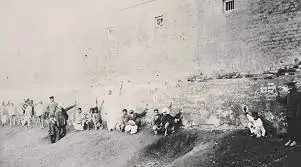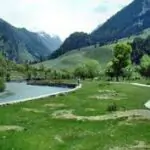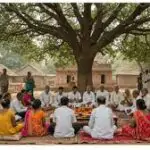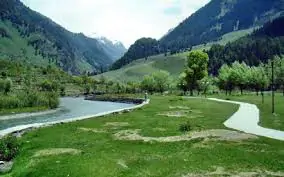A Tragic Turning Point in Indian Freedom Struggle
The Jallianwala Bagh massacre of 13 April 1919 marks one of the darkest days in Indian colonial history. It was a turning point in the Indian freedom struggle that exposed the brutal nature of British colonial rule. The horrific event occurred when British Brigadier General Reginald Dyer ordered his troops to open fire on a peaceful gathering of thousands of Indians who had assembled at Jallianwala Bagh in Amritsar, Punjab, to protest against the Rowlatt Act. Without any warning, bullets rained down on innocent civilians, including women and children, killing hundreds and injuring many more.
The Sacrifice of Innocent Lives
The gathering at Jallianwala Bagh was meant to be a peaceful protest, yet it ended in bloodshed. The narrow entrances of the Bagh were blocked, and the British forces fired indiscriminately. According to official records, 379 people were killed, but Indian sources estimated over 1,000 fatalities. The victims, mostly ordinary citizens, have been revered as martyrs in Indian history for their ultimate sacrifice in the pursuit of freedom and justice.
Nation Pays Tribute on April 13
Every year on April 13, India remembers the martyrs of the Jallianwala Bagh massacre. Various state and national leaders pay floral tributes at the Jallianwala Bagh Memorial. Schools and institutions conduct awareness programs to honor the legacy of these unsung heroes. The day serves as a solemn reminder of the cost of freedom and the need to safeguard democratic values.
Impact on Indian National Movement
The massacre led to a significant shift in the Indian freedom movement. Leaders like Mahatma Gandhi, Rabindranath Tagore, and Jawaharlal Nehru strongly condemned the British action. Gandhi began emphasizing non-cooperation as a strategy to challenge colonial rule. Tagore renounced his knighthood in protest, highlighting the national outrage the event triggered.
Jallianwala Bagh as a Symbol of Resistance
Today, Jallianwala Bagh stands as a symbol of India’s resistance to colonial oppression. The site has been preserved as a national memorial, attracting visitors and students from across the country. It teaches future generations about the price of freedom and the courage of those who laid down their lives for the nation.

B) Why this News is Important
Remembering a Historic Tragedy
The Jallianwala Bagh massacre represents an event of immense historical significance. Remembering such events educates citizens about colonial oppression and strengthens the collective memory of resistance against injustice.
Relevance to Competitive Exams
The Jallianwala Bagh incident is frequently covered in government exams, including UPSC, SSC, PCS, and defence services. Understanding the historical, political, and emotional dimensions of the event can help aspirants tackle questions in history and current affairs sections.
Highlighting National Unity and Sacrifice
This news serves as a reflection of the unity and sacrifice that fueled India’s independence movement. It inspires young minds to value the nation’s hard-won freedom and the democratic institutions that emerged thereafter.
C) Historical Context
What Led to the Jallianwala Bagh Massacre?
The massacre occurred in the backdrop of widespread discontent over the Rowlatt Act of 1919, which allowed the British government to imprison people without trial. Protests erupted across India, and Amritsar became a focal point. On Baisakhi day, a traditional Punjabi festival, thousands gathered at Jallianwala Bagh to voice their dissent. Unbeknownst to many, this act of peaceful protest would turn into a national tragedy.
Aftermath and Global Reaction
The global reaction to the massacre was one of shock and condemnation. While the British Parliament had mixed reactions, with some defending General Dyer, Indian leaders united in their outrage. The massacre galvanized a nation, triggering a mass movement that would eventually dismantle British rule.
D) Key Takeaways from “Martyrs of Jallianwala Bagh”
| S. No. | Key Takeaway |
|---|---|
| 1 | The Jallianwala Bagh massacre occurred on 13 April 1919 in Amritsar, Punjab. |
| 2 | General Dyer ordered British troops to fire on unarmed civilians protesting the Rowlatt Act. |
| 3 | Official British records claim 379 deaths, but Indian sources report over 1,000. |
| 4 | The massacre led to mass outrage and intensified the Indian freedom movement. |
| 5 | Rabindranath Tagore renounced his knighthood in protest against the massacre. |
FAQs: Frequently Asked Questions
Q1. When did the Jallianwala Bagh massacre take place?
A: The massacre occurred on 13 April 1919 during the Baisakhi festival in Amritsar, Punjab.
Q2. Who was responsible for ordering the firing at Jallianwala Bagh?
A: British Brigadier General Reginald Dyer ordered the troops to open fire on the unarmed crowd.
Q3. Why were people gathered at Jallianwala Bagh on 13 April 1919?
A: People had assembled to peacefully protest against the Rowlatt Act and to celebrate Baisakhi, a major festival in Punjab.
Q4. What was the response of Indian leaders to the massacre?
A: Leaders like Mahatma Gandhi launched the Non-Cooperation Movement, and Rabindranath Tagore renounced his British Knighthood in protest.
Q5. Why is Jallianwala Bagh considered a symbol of resistance?
A: It represents the sacrifice and courage of Indians who stood against British colonial rule, and it galvanized the Indian freedom movement.
Some Important Current Affairs Links

















